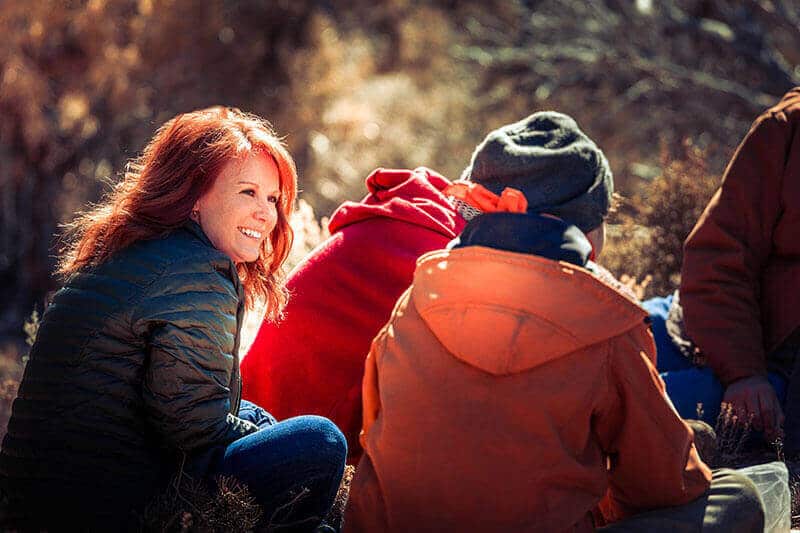Narrative Family Therapy: Change Your Family's Story
For generations, people have seen the wilderness has been a place of change and transformation. Many of the popular myths from the past involve someone entering the wilderness, overcoming a challenge, and returning a transformed individual. Today the wilderness continues to be a place of healing, with wilderness therapy being one of the modern ways that people have engaged with the outdoors to produce change and growth. However, we often think of the wilderness as a place for individual change and overlook the broader impact that wilderness therapy can have on families and communities.
To maximize the benefits of wilderness therapy for the family, RedCliff Ascent has developed a family therapy model that is based on Narrative Family Therapy and that leverages the unique strengths of wilderness therapy.

Benefits of Narrative Family Therapy in Wilderness
One of the major advantages of wilderness therapy is the insight that is gained from the experience. The novel treatment environment provides teenagers with experiences that create new perspectives on their life. When a teenager enters a wilderness therapy program they tend to behave in the same ways that they did at home. However, in the novel environment, they begin to see their actions in a new light, and they begin to have different perspectives on their behaviors. It is not uncommon for an adolescent to share their insights with their family and for the family to comment on how many times they have tried to tell their child that very thing. This is not uncommon, the novel treatment environment allows kids to take on new perspectives that they were unable to see in their homes or familiar environments. This is why wilderness therapy is so impactful in disrupting unhealthy systems that enable an adolescent's mental health issues.
When guided by a skilled therapist, the personal insights that are a common part of a wilderness experience can also be applied to the family system. Narrative family therapy allows the kid and the family to reflect on their family “story” and the stories they tell themselves about each other. It allows the kids and families to share with each other is a safe way the stories that shape the decisions they make and the feelings they experience. This also allows the child and parents to gain a deeper understanding of the way they see themselves and their family and finally allows them to revise their stories. This telling and retelling of their stories and the revising of those stories is particularly effective in a wilderness program where insight is regularly gained.
Additionally, wilderness therapy leverages the innate storytelling that occurs when groups of people camp together. When groups sit together around a campfire, innately, people tell stories. With some structure and guidance, those stories can lead to healing experiences for the family and is a great platform for narrative family therapy interventions. Narrative Family therapy is particularly effective in a wilderness therapy program because people share stories naturally and people are primed to tell stories when in the outdoors.
HOW Does Narrative Family Therapy Work in a Wilderness Program?
One of the concerns many people have with conducting family therapy in the wilderness is the distance between the family members. Using Narrative Therapy helps overcome this obstacle. Narrative therapy is designed to be done asynchronously and through writing and stories. Writing and stories are common interventions in wilderness therapy and the asynchronous design of the model allows for the intervention to be done in the backcountry without the need for technology to facilitate synchronous interventions.
In an interview with students who completed treatment at RedCliff Ascent, they were asked what part of the program did they find helpful three of the students noted:
It was nice for me to be able to just write my father who I have had issues discussing things and when I wrote letters he could not argue back with me, he had time to think and read and not respond off the top of his head which was nice. The pace of communication was good for me and my family.
Another student noted:
I would probably say a part that contributed for me the most was probably the parent narratives because you see not just your own but someone else’s perspective of what was happening and it makes you regret what you did.
6 Elements That Make Narrative Family Therapy Work
1. Narrative Family Therapy Model Includes the Whole Family
Our proven Narrative Family Therapy treatment model helps the whole family develop healthy and appropriate relationships, not just the identified patient.
2. Narrative Family Therapy Leverages the Strengths of the Outdoors
The Narrative Family Therapy model is specifically designed for wilderness therapy and compliments the unique strengths of a novel & challenging outdoor setting.
3. Narrative Therapy Provides a Framework for Staff & Programming
Narrative Family Therapy is integrated throughout our whole program. It provides a flexible framework to guide staff as they help students change their stories.
4. Narrative Family Therapy Is Individualized & Holistic
The primary therapist collaborates with the whole treatment team to tailor treatment to help the whole family develop the skills and mastery needed to change their story.
5. Narrative Therapy Uses Ceremony & Ritual
Healthy family ceremonies and rituals help facilitate and reinforce changes to a family’s story.
6. Narrative Family Therapy is Researched and Published
Outcome studies on RedCliff’s Narrative Family Therapy model have been peer-reviewed and published in scholarly journals.
We don’t just use evidence-supported techniques, we meet the official criteria to be an “evidence-based treatment program.”
Family Programming at RedCliff Ascent's Wilderness Program
As part of the Narrative Family Therapy model, it's important to help parents feel engaged and supported while their teen is in a wilderness program. To do this, RedCliff Ascent provides:
Weekly Phone Calls
Families talk with the primary therapist weekly to provide treatment updates and support for the family.
Letter Writing
Connecting through written letters slows communication and has been proven an effective intervention to disrupt unhealthy family patterns & behaviors.
Family Support Groups
Support groups are provided for families to support each other in the treatment process and create a community for the parents/guardians.
Parenting Webinars
Weekly training with the therapists to help parents improve their parenting skills.
Parent Portal
The parent portal provides families with insight into their kid's experience and progress.
Parent Resource Library
Parents have access to a content library that provides psychoeducation that encourages their personal growth while their child is at RedCliff.
Ready to Change Your Family's Story?
Speak with an admissions counselor today to see if Narrative Family Therapy and a wilderness therapy program can help your teen and your family.
